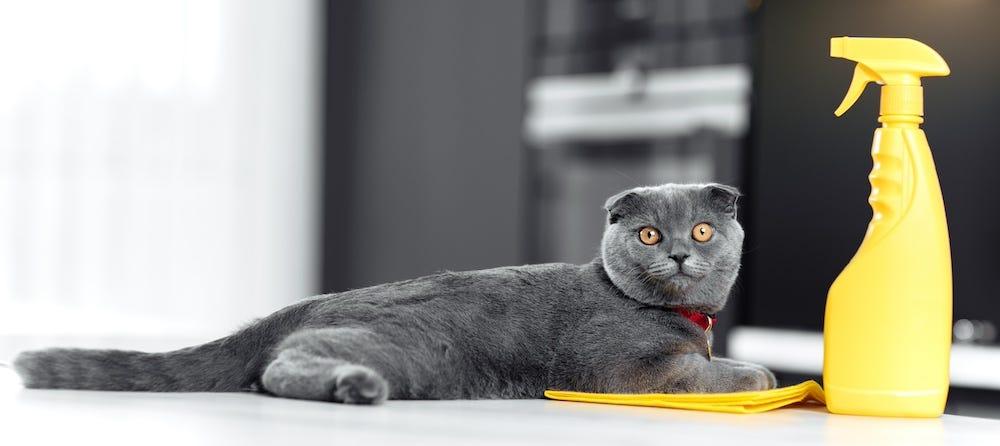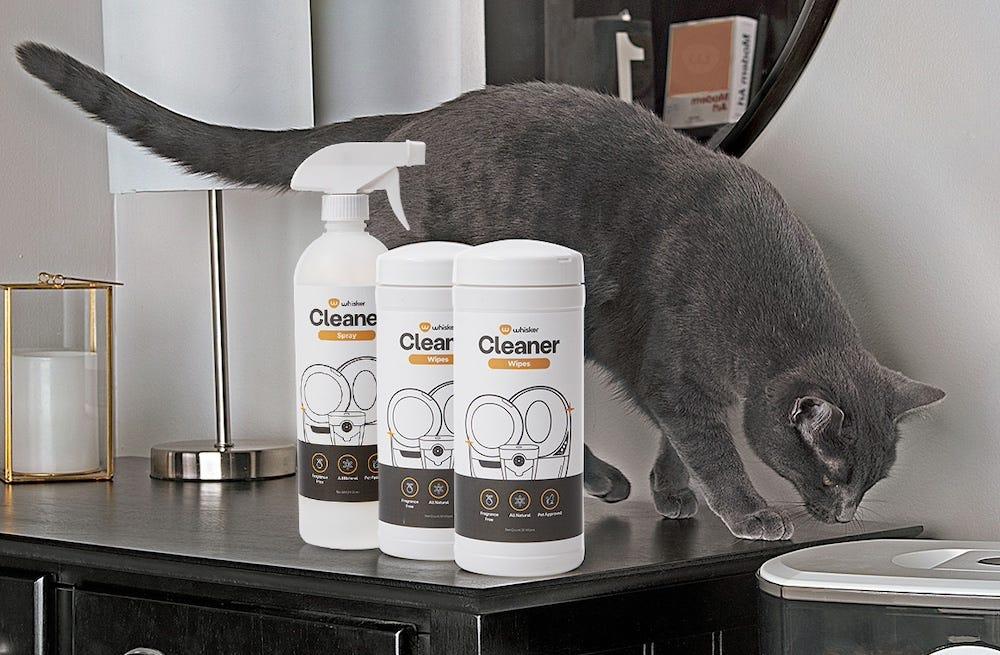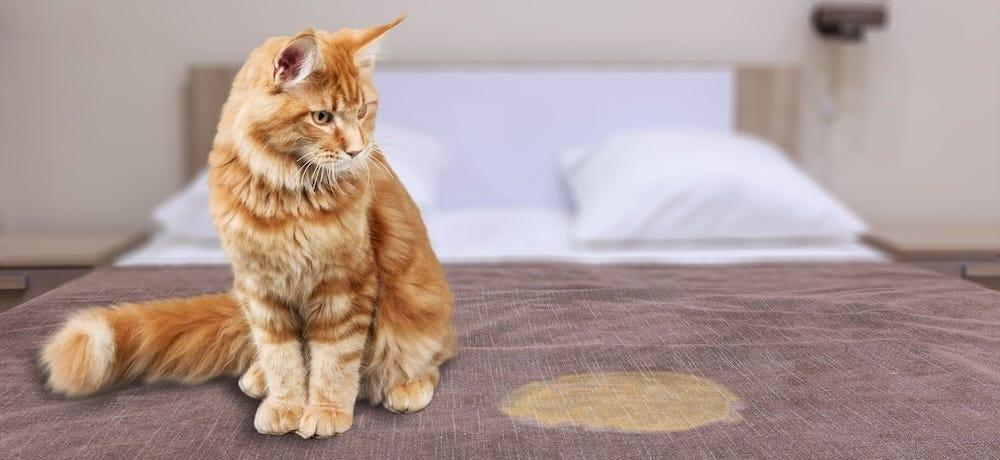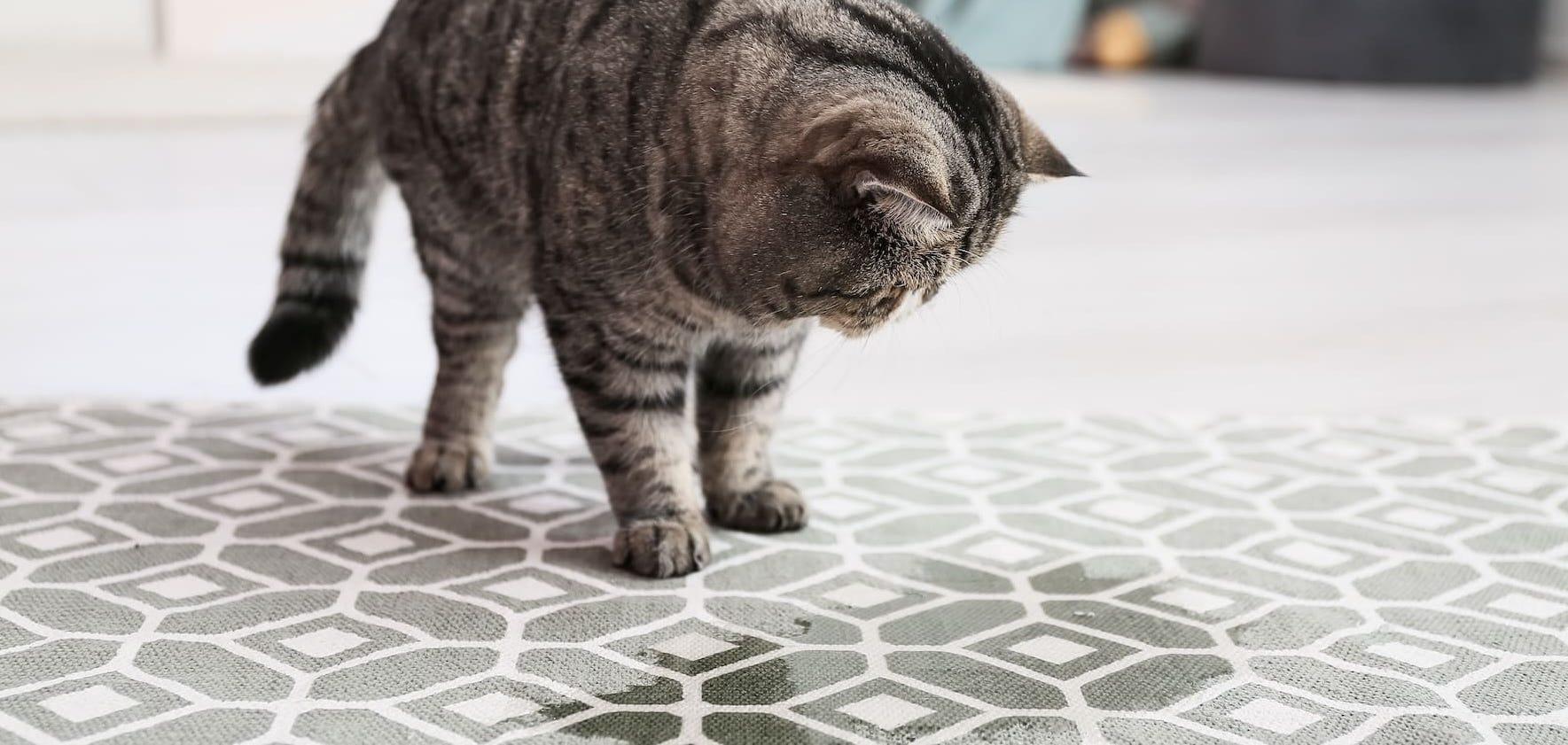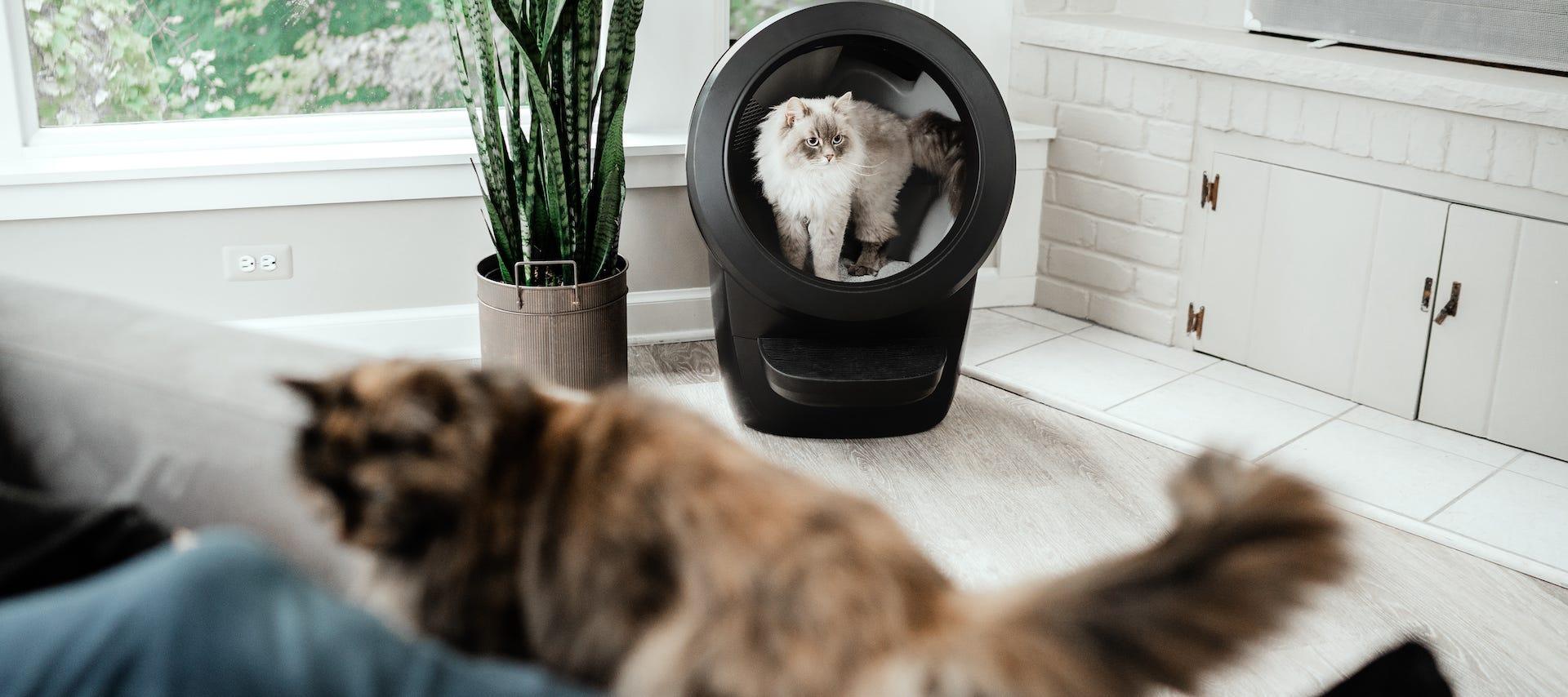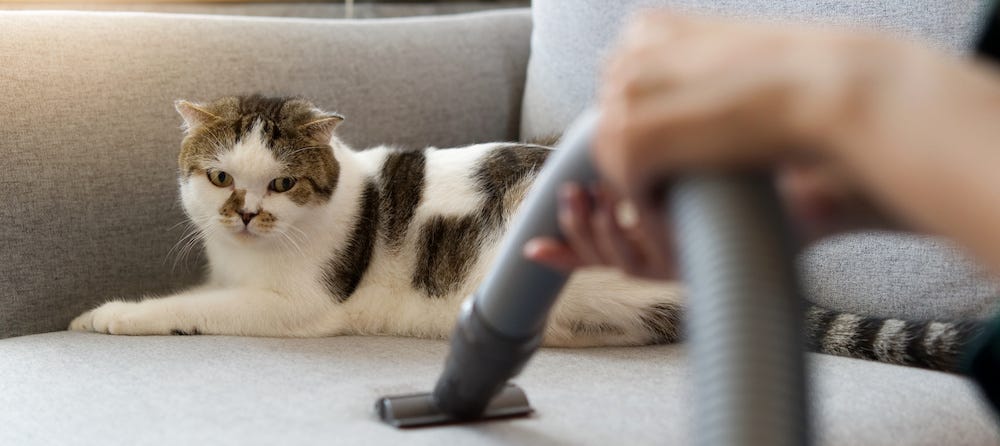No matter how well-trained your cat is, you’re bound to run into the occasional accident. Unfortunately—as you’re probably aware—cat urine smell is really strong and can be tough to get rid of. So how do you eliminate that stubborn cat pee smell? Before you go pouring bleach all over your home, throwing furniture away, and ripping up carpeting, take a look at these helpful tips for cat urine cleanup.
Pet-safe cleaning products
Your first priority is to choose a cleaning product that’s safe for pets (and, of course, humans). If your cat walks on or licks an area that was recently treated, you can rest easy knowing you’ve used a product that won’t sicken them.
The best pet-safe cleaning products tend to be fragrance-free and enzymatic. Enzymatic cleaners target organic matter—they can be a very effective means of breaking down the rather stubborn chemical structure of the cat urine, which will help remedy any unpleasant odor.
When choosing a cat urine remover, look for simp le ingredients like the following:
- Water
- High-count good bacteria
- Amino acidic enzymes (amylase, lipase, and protease)
The best enzyme cleaners for cat urine—including Cleaner Spray and Cleaner Wipes by Whisker—are pet-safe, fragrance-free, and specifically formulated for pet messes. Their bio-enzymatic technology utilizes non-pathogenic (“good”) bacteria to digest organic material, stains, and odors caused by urine, feces, vomit, and saliva.
Even when using pet-safe cleaners, make sure the treated area dries completely before allowing your pet access.
Ingredients to avoid
Avoid cleaning products that use any of the following ingredients:
- Ammonia
- Bleach
- Chlorine
- Essentials oils, particularly tea tree
- Formaldehyde
- Phenols
- Phthalates
- Rubbing alcohol
Do not use ammonia, or any solutions containing ammonia, on a cat urine stain. Urea and uric acid are present in cat urine, which, when broken down by bacteria, releases ammonia—this is why cat pee smells so bad. Therefore, the combination of cat urine and ammonia will actually cause the odor of the urine to become more pronounced, which may, in turn, lead your cat to mark the area again.
The best cat urine remover
To truly remove both stains and odors, we recommend using an enzymatic cleaner like:
Whisker's cleaner spray and wipes
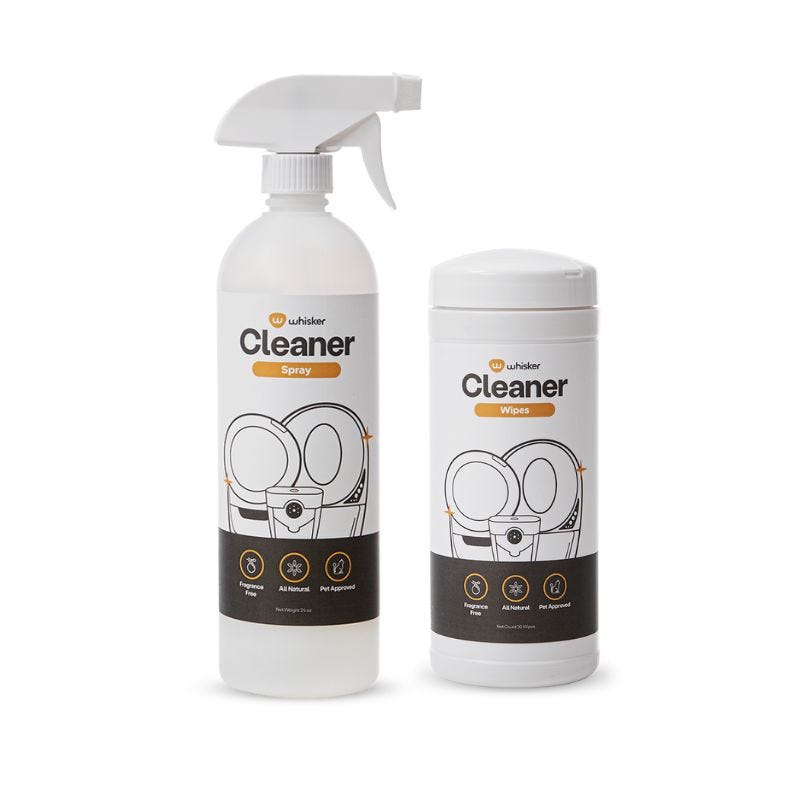
Shop Whisker's Enzymatic Cleaner
This enzymatic cleaner spray is an all-natural and fragrance-free enzymatic cleaner specifically formulated for pet messes. It's the ideal cleaner for resistant cat urine odors.
Angry Orange's odor eliminator
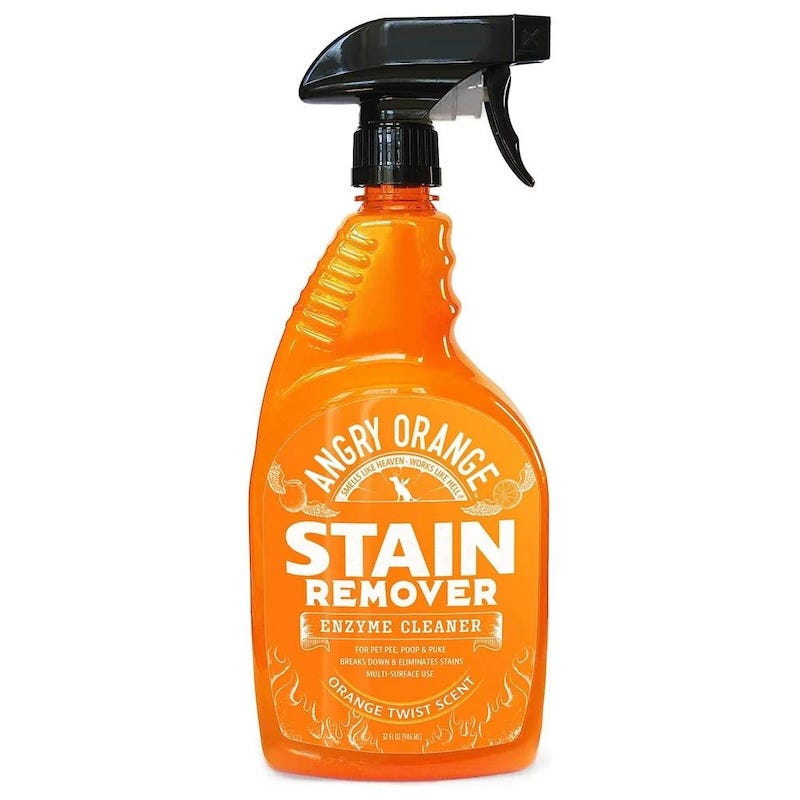
Shop Angry Orange Stain Remover
Originally developed for agricultural applications, this cleaner uses the power of citrus to effectively neutralize pet odors, including cat urine. Plus, cats hate citrus smells, meaning they might not try the same spot again afterwards.
Bubba's rowdy friends pet stain & odor terminator"
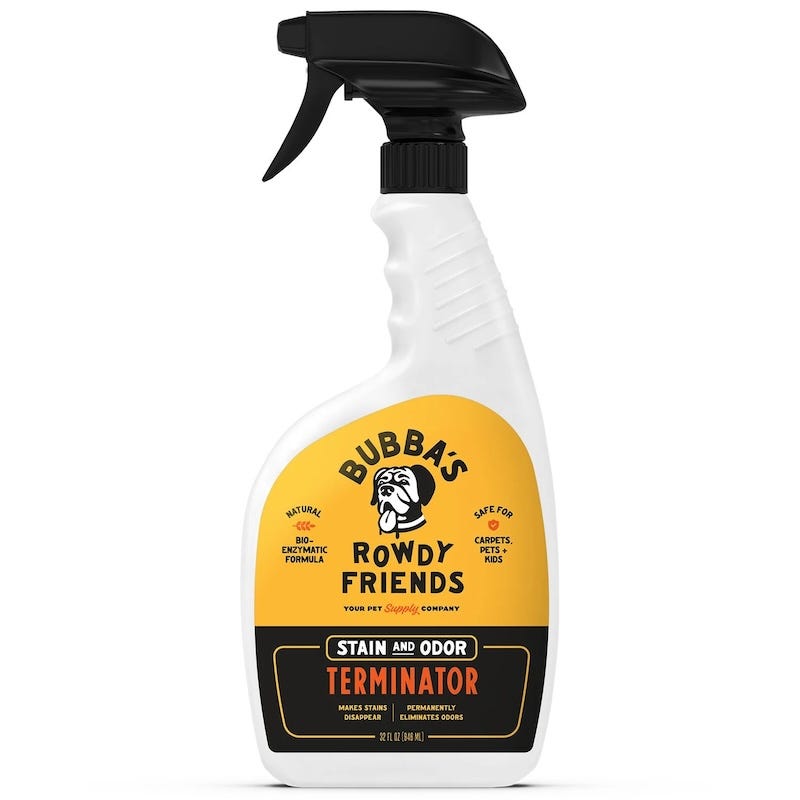
Bubba's rowdy friends pet stain & odor terminator
This enzymatic cleaner is effective on both new and set-in stains across various surfaces, including carpets, rugs, wood, and tile. It leaves a subtle mint and eucalyptus scent and is certified by the Carpet and Rug Institute.
Homemade cat urine cleaner
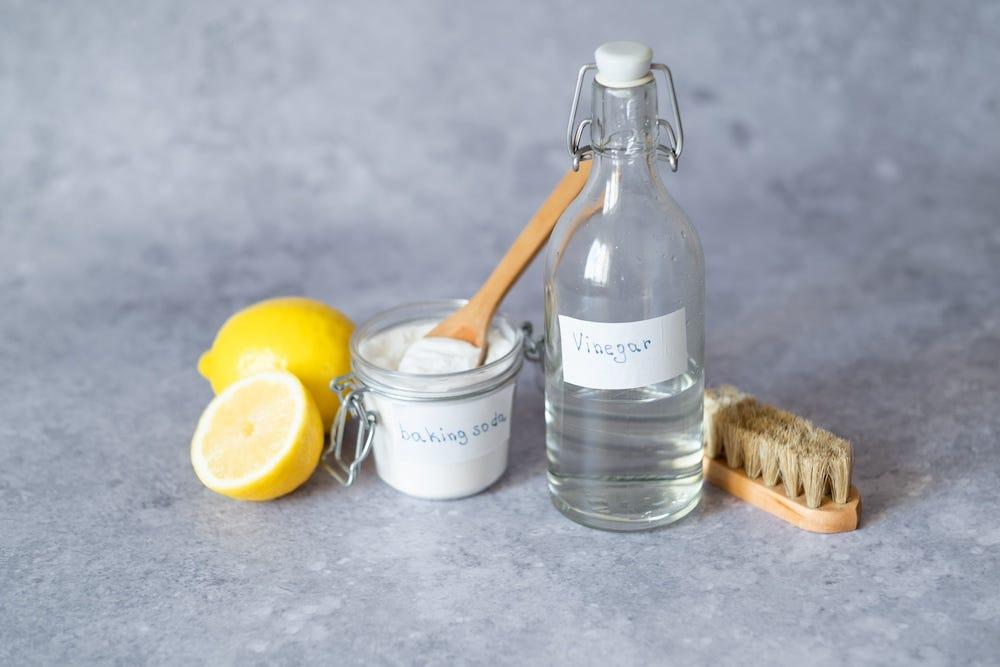
Looking for a home remedy to get rid of cat pee smell? Making homemade enzyme cleaner for cat urine using common household products is easy.
Vinegar is a good ingredient for killing the bacteria that can lead to unpleasant odors. Similarly, baking soda can prove to be quite an effective deodorizing agent. Hydrogen peroxide can also be very helpful in mitigating both the color and smell of a cat urine spot, but only the weakest concentration (3%) is advisable. Any stronger and the solution may discolor or damage your carpeting.
Here are some different recipes for tried and true homemade cat urine cleaner, which have already proven effective for many cat parents.
Water and vinegar solution
- 1 ½ cup warm water
- ½ cup vinegar
- Mix and pour over stain, allow to sit for 3-5 minutes
- The vinegar is good for killing bacteria
- Effective for new or old stains
- DO NOT use on marble or stone
If this hasn’t quite done the trick, don’t lose hope just yet. There’s still more that can be done!
Baking soda
- All-purpose baking soda
- Sprinkle generously over the soiled area
Here’s another good one that you can employ, if all else has failed to remedy a really nasty spot.
Hydrogen peroxide and dish detergent
- ¾ cup 3% hydrogen peroxide
- 1t dish detergent
- Mix and sprinkle over baking soda (test on small area first—hydrogen peroxide can discolor some carpeting)
- Work the solution deep into the spot
Now, leave all of your efforts there on the spot to dry for a few hours. Once everything has set, you’ll want to vacuum the baking soda and, if the stain is still there, repeat the entire process.
Homemade enzyme cleaner for cat urine
Vinegar, baking soda, and hydrogen peroxide are not enzymatic cleaners. A homemade enzyme cleaner will likely be a weaker formula than what you'll find in a commercial product. If you’d like to try your hand at it, follow this DIY recipe that mixes yeast, brown sugar, and lemon scraps with distilled water.
Tips for removing cat urine
Whether they’re old stains or new spots, it’s important to remove cat urine smells as soon as possible. Here’s how to get rid of cat pee smell and stop a cat from peeing in certain spots.
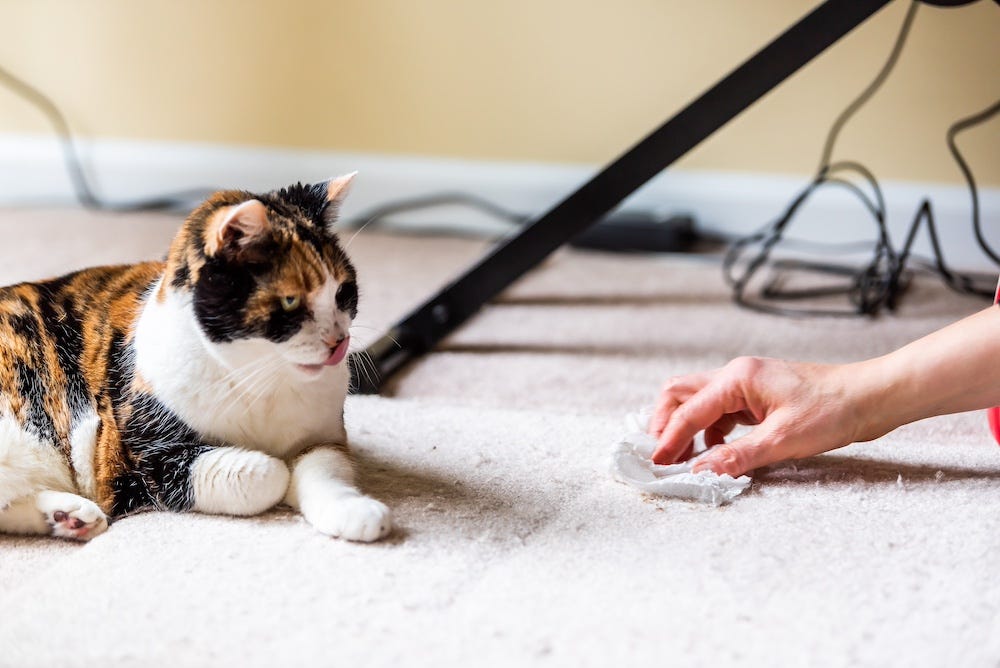
Identify the source
Your house smells like cat pee but you can't find it? Start investigating the source of the odor. Common spots include corners of rooms, upholstered furniture, rugs and carpets, potted plants, piles of laundry, personal belongings, and even empty boxes.
Clean the affected area
Once you’ve found the source of cat urine smell, use your enzyme cleaner or DIY solution to thoroughly clean the affected area.
- If a cat urine incident has just occurred: Use either paper towel or a cloth towel to blot—not rub—the area dry.
- If the area has already begun to dry: Pour some cold water over the spot and then blot it dry.
After you’ve made the area sufficiently dry, begin with the water and vinegar solution. If that’s not proving strong enough, proceed with the baking soda, and, if that still isn’t cutting it, move on with the hydrogen peroxide and dish detergent solution as prescribed above.
After allowing the solution(s) to set, give it a few hours time to dry up, then clean up the residual ingredients. If you’re still seeing discoloration or smelling foul odor, try repeating the process from the beginning.
If you’re still not experiencing success, you may want to switch to an enzyme cleaner, which can be found online or at most major pet stores. Apply the cat urine cleaner directly to the trouble spot and leave it to dry naturally, or wipe it up after 15 minutes. Do not rush the drying process.
Address the underlying cause
Whether your cat is seemingly peeing everywhere or targeting certain spots in your home, you need to identify the cause of the behavior. First, try to determine if your cat is spraying or urinating through observation:
- When spraying, cats stand up, lift their tail, and project towards a surface. You may also notice their tail quivering.
- When urinating, cats squat onto horizontal surfaces and leave a larger pool of urine.
Oftentimes, cats are just picky about cleanliness. See if an easy fix will solve the problem: Give the house a deep clean, add another litter box, or move the box to a new location. Aim to clean the litter box daily, or switch to a self-cleaning litter box.
In most cases, male and female cats spray to communicate and mark territory. Spay and neuter your cats if they aren’t, and try plug-in products and sprays such as Feliway to help promote good behavior due to their cat pheromone technology. These products are clinically proven to reduce stress and help eliminate stress-related behaviors like spraying.
On the other hand, cats may stop using the litter box due to stress, urinary diseases, litter box issues, and more. Look for other symptoms alongside your cat’s inappropriate urination, like blood in urine, excessive drinking, lethargy, or even aggression. If these symptoms or other unusual signs present themselves, visit your vet as soon as possible.
For further cleaning questions and tips, read our full cleaning guide.
